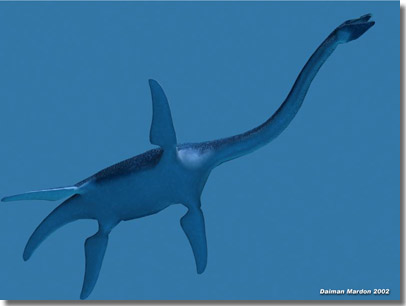Stars and Dust Across Corona Australis (APOD 2009 June 5)
Posted: Fri Jun 05, 2009 12:50 pm
http://apod.nasa.gov/apod/ap090605.html
----------------------------------------
http://antwrp.gsfc.nasa.gov/apod/ap040715.html
----------------------------------------
http://antwrp.gsfc.nasa.gov/apod/ap070921.html
----------------------------------------
http://en.wikipedia.org/wiki/Plesiosaur wrote:
<<The first plesiosaur skeletons were found in England by Mary Anning, in the early 1800s, and were amongst the first fossil vertebrates to be described by science. Many have been found, some of them virtually complete, and new discoveries are made frequently. One of the finest specimens was found in 2002 on the coast of Somerset (England) by someone fishing from the shore. This specimen, called the Collard specimen after its finder, was on display in Taunton museum in 2007. Another, less complete skeleton was also found in 2002, in the cliffs at Filey, Yorkshire, England, by an amateur palaeontologist.>>

http://antwrp.gsfc.nasa.gov/apod/ap040715.html
----------------------------------------
----------------------------------------http://www.aao.gov.au/images/captions/aat073.html wrote:
<<This spectacular reflection nebula is the result of a few bright stars caught up in a large, dusty cloud. If that is all there was here, this region would be considered to be like the Pleiades, an accidental association of dust and stars. However, there are features here that show the dark cloud to be an active star forming nebula, though most of the action is hidden from view.
The peculiar yellowish curved streak near the two bright reflection nebulae surround an intriguing object best seen in infrared light, R CrA, a young star still accreting interstellar material on to its surface. It seems to be the source of two compact but distinctly red patches which are Herbig-Haro objects, often the first visible signs of star formation occurring deep inside dark clouds. These compact nebulae are ejected from proto-stars during the later stages of star formation and sometimes appear in pairs, moving in opposite directions from the hidden star forming region. The R CrA complex is about 500 light years distant, one of the nearest star-forming regions.>>
..........................................http://antwrp.gsfc.nasa.gov/apod/ap020414.html wrote:
<<RX J1856.5-3754 (also called RX J185635-3754, RX J185635-375, and various other designations) is a nearby neutron star in Corona Australis. It is believed to have been created by a supernova explosion of its companion star about one million years ago and is moving 108 km/s across the sky. It was discovered in 1992, and observations in 1996 appeared to confirm that it was a neutron star, the closest neutron star to Earth yet discovered. It was originally thought to be about 150–200 light-years away, but further observations using the Chandra X-ray Observatory in 2002 appear to show that its distance is greater—about 450 light-years.>>
----------------------------------------http://en.wikipedia.org/wiki/Homo_heidelbergensis
<<Homo heidelbergensis ("Heidelberg Man") is an extinct species of the genus Homo which may be the direct ancestor of Homo neanderthalensis in Europe. The best evidence found for these hominin date between 600,000 and 400,000 years ago. H. heidelbergensis stone tool technology was considerably close to that of the Acheulean tools used by Homo erectus. The morphology of the outer and middle ear suggests they had an auditory sensitivity similar to modern humans and very different from chimpanzees. They were probably able to differentiate between many different sounds.>>
----------------------------------------http://www.botproductions.com/stellar/corona_australis.html wrote:
<<Corona Australis was one of Ptolemy's original 48 constellations. It is believed to refer to the god Bacchus who placed this constellation in the sky as a wreath honoring his mother Semele. It also honors the five time victory of Corinna over Pindar in their poetical contest. In ancient times, this constellation was drawn as a bunch of arrows emanating from the hand of the Centaur.>>
http://antwrp.gsfc.nasa.gov/apod/ap070921.html